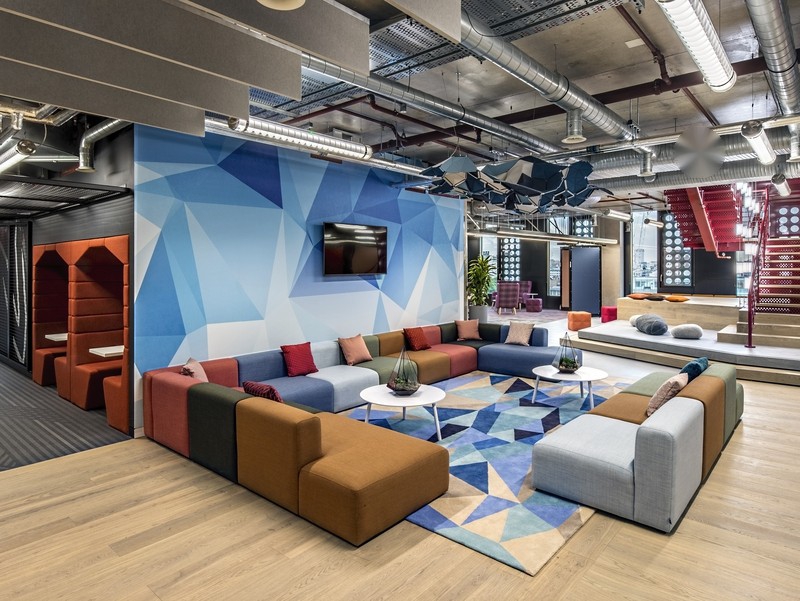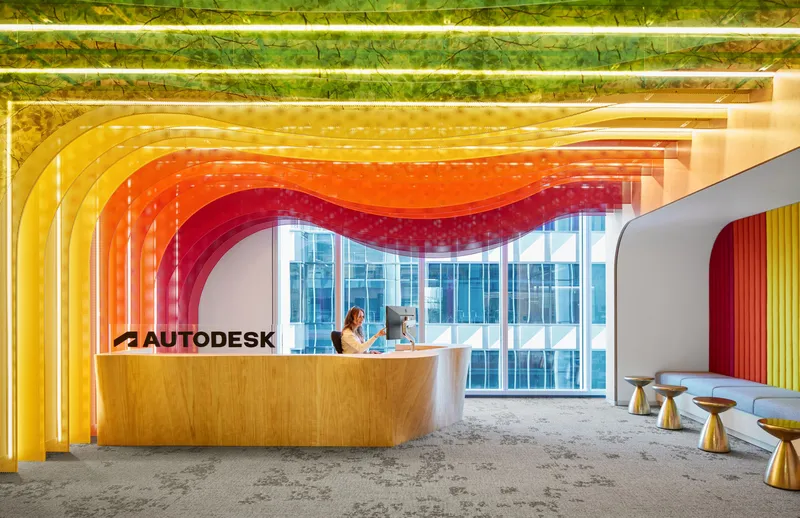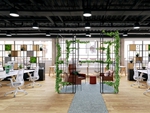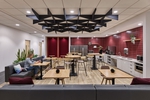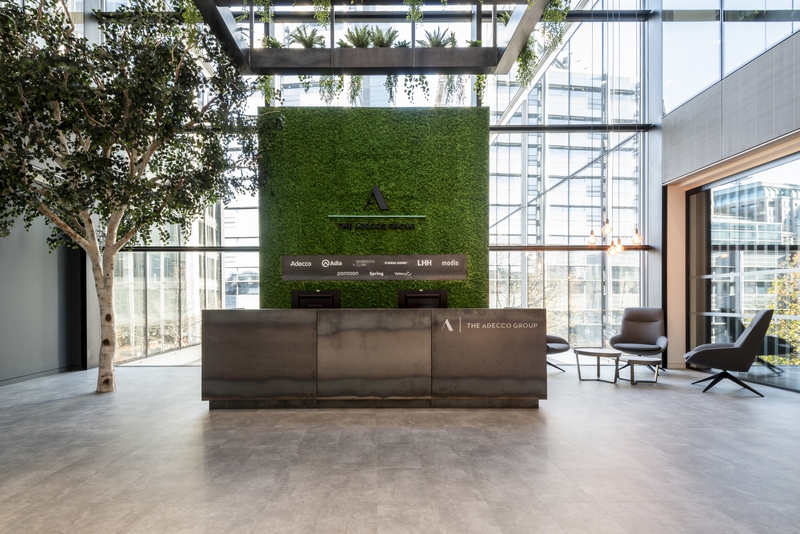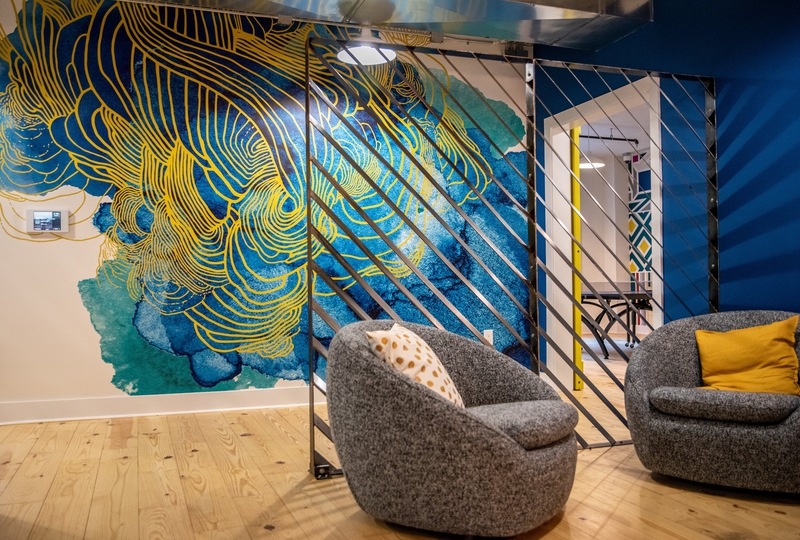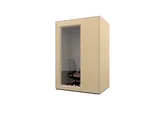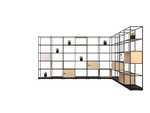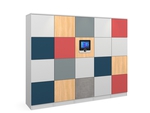17 février 2021
Tendances du secteur
Humans are social creatures, and our ability to form communities, and to help out and learn from one another, is what has allowed us to thrive. Fostering a healthy community is integral to a company’s success, but Covid-19, and the rise of working from home, has made this more difficult than before.

The difficulties of maintaining community
As we noted in our recent blog on “Optimizing the Working From Home Experience”, the most common problem among employees working from home is that it’s harder to communicate and work together when you’re not sharing a space. According to Gensler’s U.S. Work From Home Survey 2020, the number one reason employees wish to return to the office is people. They miss meetings with colleagues, miss socializing with others, and having impromptu face-to-face interactions. Loneliness has been on the rise for years and has only been exacerbated by social distancing and remote working, we published a recent article looking into how coronavirus has exacerbated loneliness which goes into this in more detail.
More than half of respondents to Gensler’s survey said that collaborating is more difficult now. So is staying up to date with what colleagues are doing. It’s harder to build relationships with others, and harder also to maintain a strong connection with a company’s mission and culture.

Why workplace community matters
The chance encounters that happen in offices, perhaps by the water cooler, or the coffee machine, are often where the best ideas come from. They are moments of inspiration and exchange, which often lead to collaborations. Ad-hoc and spontaneous interactions help employees to grow and learn and are only really possible in a shared space. Furthermore, chance encounters build good relationships and shared company culture. They create lasting friendships and raise morale. It’s much easier to like, understand, and trust a person if you’ve also met them in person.
How office design can help build community: The Hybrid Workplace
Good office design can help engage and inspire employees, and also help them build connections with one another. The Post-Covid Workplace will never go back to how it was. Rather than going back to how our offices used to be, we’ll take the lessons learned from working from home, and use them to build a new kind of workplace: The Hybrid Workplace.
The Hybrid Workplace blends the best parts of working in an office and working from home. It’s a bridge that connects those in the office with those working remotely, so they can all feel once again like they’re sharing the same space. By using the latest software technology, combined with the latest thinking in office design, the Hybrid Workplace is comfortable, and agile, and allows companies to rebuild and foster thriving hybrid communities.

How to build a great Hybrid Workplace:
1. Blend real and virtual spaces
Office design now needs to be rethought. It needs to tend to the needs of those working in the office, but also the needs of those working remotely. Everyone should feel that they have an equal seat at the table; even those who aren’t literally sat at the table, but are instead connected by video chat.
As we noted in our recent blog on “The Rise of the Video Call”, we need to be building spaces for virtual meetings into workplace strategies. Workplaces have to be redesigned so that they’re more inclusive of on-screen participation, and a good way of doing this is by installing dedicated video conferencing booths. These video pods are able to be inclusive of all types of people and abilities while maintaining the function of providing the best possible experience for video conferencing, where factors like lighting, acoustics, and ergonomics have been well thought. Hybrid ways of working calls for hybrid spaces and workplace video pods that allow us to seamlessly expand the office into the home and the virtual world.
The latest software can also help. Video-conferencing tools like Zoom, Teams, Google Hangouts, and Skype have transformed how we communicate with one another, while project management systems and multimedia whiteboard applications empower us to collaborate in completely new ways. Going forward, virtual and augmented reality will be used to blend real and virtual spaces even more. We've seen a growing popularity in workspace events like the Insights panel debates and the Live Demos where we have been able to show, discuss, demonstrate and interact with audiences all over the World. Virtual tours of showrooms and virtual events reinforce the need to continue producing and adapting to the augmented applications.
2. More Collaborative Workspaces
Offices will no longer be designed primarily for individuals working heads-down at their desks, but rather for collaborative, community-based work. This may seem counterintuitive during a pandemic – that there will be fewer separate desks, and more shared collaborative areas – but it’s a crucial part of building a Hybrid Workplace that employees will want to come to work in.
However, these shared spaces will no longer be the traditional meeting rooms with large tables of old. Rather they will take different and flexible forms: from cafés and breakout areas to smaller meeting pods, such as our Railway Carriages, to coworking spaces and collaboration areas. Our Palisades II zone-dividing system allows office designers to create perfect collaboration areas that are open, rather than closed, and easily reconfigured for different tasks. Office zone dividers like this can be used to create 'neighborhoods' and build modular style sections to an office that can also give pleasant aesthetics. One example, using Palisades, was with Adecco who designed this space to provide a visual barrier across their central, glass atrium without blocking out the natural sunlight, and also incorporated some soft seating for a comfortable and relaxed experience.

Don’t stop experimenting
In the future workplace, the most attractive feature will be the presence of a strong community with a vibrant culture. This is what employees will value most, and want to come to and be a part of. In order to foster such a healthy workspace community, the Hybrid Workplace should be a space of continuous experimentation in office design and working practices. By continuing to experiment, we’ll find new ways to build hybrid communities that bridge the gap those in offices and those working from home: resulting in a better experience for all employees.
Partager cet article
